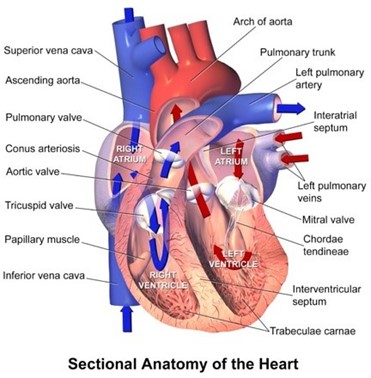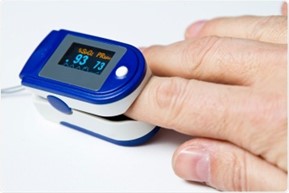A patient newly diagnosed with heart failure understands that heart failure means there is a lack of sufficient blood supply to the patient's tissue throughout the body tells you that the is responsible for pumping blood from the hear t to the lest of the body.
Left Ventricle
Left Atria
Right Atria
Right Ventricle
The Correct Answer is A
The left ventricle is responsible for pumping oxygen-rich blood from the heart to the rest of the body. In heart failure, the left ventricle is weakened and unable to pump blood efficiently, resulting in reduced blood flow to the body's tissues. This can lead to symptoms such as fatigue, shortness of breath, and swelling in the legs and feet. Treatment for heart failure may include medications, lifestyle changes, and in some cases, surgical interventions such as a heart transplant.

Nursing Test Bank
Naxlex Comprehensive Predictor Exams
Related Questions
Correct Answer is A
Explanation
Pulse oximetry is a non-invasive method of monitoring the oxygen saturation level in the blood. A normal range for oxygen saturation is between 95% and 100%. An oxygen saturation level of 89% indicates hypoxemia, which is a serious condition that can lead to tissue damage, organ failure, and even death if left untreated.
Therefore, the priority nursing action is to perform a respiratory assessment to determine the cause of the hypoxemia. This should include assessing the client's airway patency, breathing patern, lung sounds, and oxygen therapy if the client is already receiving it. The nurse should also observe for any signs of respiratory distress such as cyanosis, accessory muscle use, or difficulty breathing.

While it is important to document hypoxemia and report it to the healthcare provider, the priority at this time is to assess and intervene promptly to prevent further deterioration of the client's condition. Checking the placement of the pulse oximeter may be necessary if the reading is unreliable, but it is not the priority in this scenario.
Correct Answer is D
Explanation
This outcome is the most appropriate because smoking can worsen COPD and lead to further respiratory complications, while oxygen is often used to help patients with COPD breathe more easily. Smoking while wearing oxygen can be very dangerous and increases the risk of fire and explosion. Therefore, the best expected outcome is for the patient to completely avoid smoking while wearing oxygen.
Option a is not a recommended solution since vaping may also worsen COPD symptoms and there is limited evidence of its safety in people with respiratory conditions. Option b is a good outcome, but it may not be achievable in such a short time frame. Option c is not an ideal outcome as even a few cigaretes can cause harm to the respiratory system, exacerbate symptoms, and slow down the healing process.
Whether you are a student looking to ace your exams or a practicing nurse seeking to enhance your expertise , our nursing education contents will empower you with the confidence and competence to make a difference in the lives of patients and become a respected leader in the healthcare field.
Visit Naxlex, invest in your future and unlock endless possibilities with our unparalleled nursing education contents today
Report Wrong Answer on the Current Question
Do you disagree with the answer? If yes, what is your expected answer? Explain.
Kindly be descriptive with the issue you are facing.
